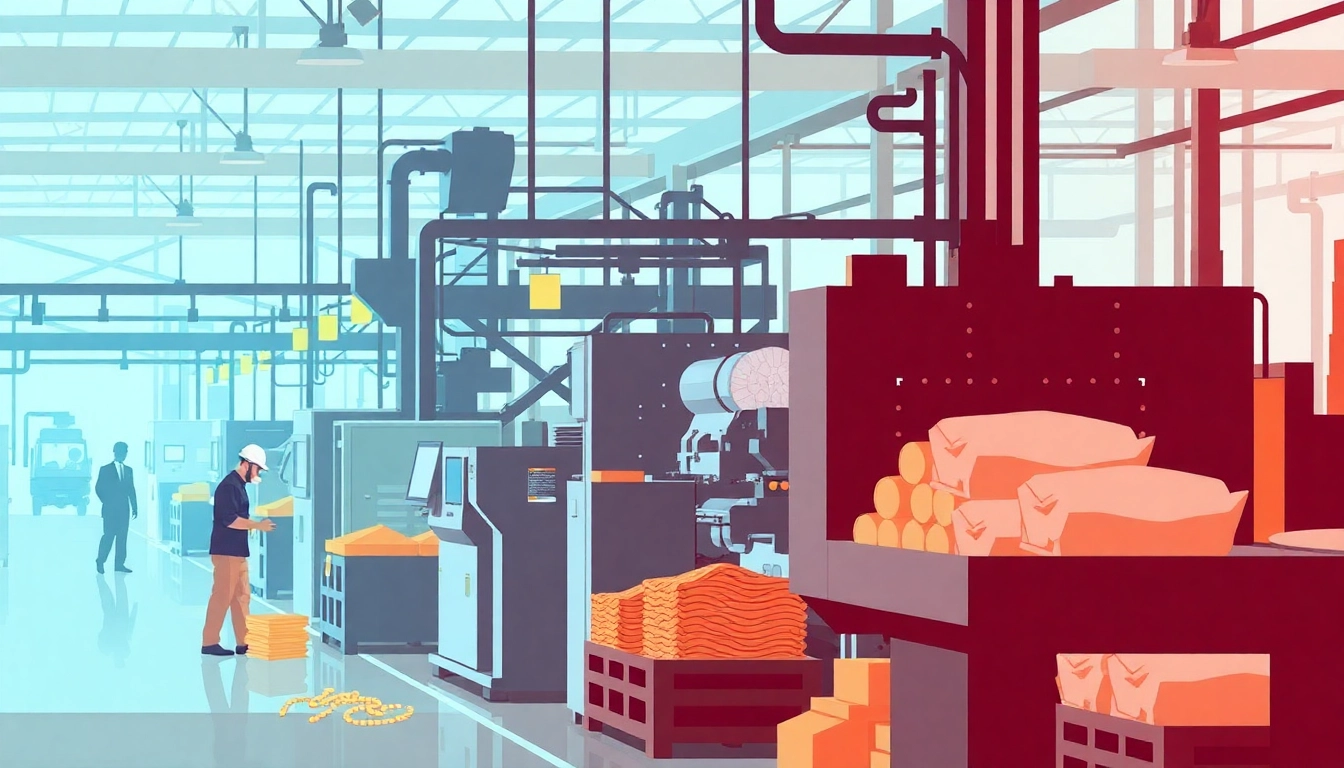1. Introduction to Manufacturing Costs and Technology
Understanding technology within the manufacturing sector is crucial for businesses aiming to maintain competitiveness and efficiency. Manufacturing costs encompass various elements that contribute to the overall expenditure of producing goods. This complexity necessitates a comprehensive understanding of what drives these costs, particularly in a technology-driven landscape. In this article, we will dissect the fundamental components that influence manufacturing costs, explore the integral role technology plays in managing these costs, and discuss strategies for optimizing production efficiency.
1.1 Overview of Manufacturing Costs
Manufacturing costs typically comprise direct materials, direct labor, and overhead expenses. Direct materials include raw materials necessary for production, while direct labor refers to the workforce involved in the manufacturing process. Overhead costs consist of indirect expenses such as utilities, rent, equipment maintenance, and administrative salaries.
As competition in the global market intensifies, manufacturers are increasingly pressured to reduce expenses while maintaining quality. Consequently, a clear understanding of each cost component is essential for effective budget management and profitability. Every manufacturer should regularly assess these costs to identify inefficiencies and areas for improvement.
1.2 The Role of Technology in Cost Management
Technology is a vital catalyst for enhancing manufacturing efficiency and reducing costs. By implementing advanced systems like Enterprise Resource Planning (ERP), manufacturers can streamline operations, minimize waste, and improve decision-making capabilities. Automation technologies, such as robotics and AI, also play a critical role in cost reduction by optimizing production speed and precision, thus lowering labor costs and reducing human error.
1.3 Importance of Understanding Costs in Manufacturing
Comprehending manufacturing costs is not merely about budgeting; it directly influences strategic decision-making. Understanding cost dynamics allows businesses to set competitive pricing strategies and identify profitable product lines. Moreover, it enables manufacturers to allocate resources efficiently, ensuring optimum utilization while maintaining product quality and customer satisfaction.
2. Key Factors That Influence Manufacturing Costs
2.1 Labor Expenses and Automation Technology
Labor costs are often among the most significant expenses for manufacturers. The wages, benefits, and training costs associated with the workforce can dramatically impact overall production costs. In response to rising labor expenses, many manufacturers are adopting automation technologies. For instance, automated material handling systems can diminish the reliance on manual labor, thus reducing labor costs while enhancing overall productivity.
Moreover, technology such as AI and machine learning can be employed to monitor labor productivity, helping enterprises make data-driven decisions about workforce management. For example, predictive analytics can forecast staffing needs for varying production demands, ensuring that companies neither overstaff nor understaff their operations.
2.2 Raw Materials and Sourcing Technologies
The cost of raw materials significantly affects manufacturing costs, influenced by a variety of factors such as global supply chain dynamics and market demand. Technologies like blockchain can improve transparency in the sourcing process, enabling manufacturers to track raw material availability and pricing in real time. Additionally, utilizing AI-driven algorithms can assist in finding the best suppliers, comparing prices, and ensuring quality standards, thus ensuring lower raw material costs and enhanced supplier relationships.
2.3 Market Trends and Their Impact on Technology Use
Market trends—such as shifts towards sustainable materials or increased consumer demand for customization—necessitate technology adaptation in manufacturing. By staying abreast of market trends and technological advancements, manufacturers can better align their processes with consumer preferences. For instance, implementing 3D printing technology allows manufacturers to create customized products with minimal waste, satisfying consumer demand while controlling production costs.
3. Case Studies: Technology in Action
3.1 Successful Implementations of Technology in Manufacturing
Several manufacturing giants have successfully integrated technological solutions that have substantially lowered their manufacturing costs. For example, Siemens AG implemented a digital twin technology, which allows them to create a virtual model of their production processes. This innovation streamlines operations, identifies bottlenecks, and reduces machine downtimes, resulting in a significant reduction in operational costs.
3.2 Lessons Learned from Technology Failures
Not every technological integration leads to success. The failure of Kodak is a prominent case illustrating the risks of technological stagnation. Despite pioneering digital photography, Kodak hesitated to shift from film to digital, ultimately leading to its downfall. This highlights the necessity for manufacturers to embrace innovation continually and not resist changing market demands.
3.3 Best Practices for Technology Integration
Effective integration of technology requires careful planning and execution. Manufacturers should start by conducting thorough assessments to identify areas needing improvement. Incremental implementation, along with regular training for employees, ensures a smoother transition. Engaging with technology partners who understand both the operational goals and technological capabilities is also essential for maximizing the benefits of new technologies.
4. Future Trends in Manufacturing Technology
4.1 Predictive Analytics and Data-Driven Decisions
Understanding how to leverage data is crucial for future manufacturing efficiency. Predictive analytics helps manufacturers forecast trends, manage inventory levels, and optimize their supply chain. Businesses that utilize these insights can respond proactively to changing market conditions, resulting in significant cost savings and improved agility.
4.2 Sustainability and Green Technologies
As environmental concerns mount, sustainable manufacturing practices are becoming increasingly important. Implementing green technologies—such as energy-efficient machinery and renewable energy sources—can not only reduce operational costs over time but also appeal to the environmentally conscious consumer market. Companies that invest in sustainability now will likely position themselves favorably in the future market landscape.
4.3 The Advent of Industry 4.0
Industry 4.0 signifies the next industrial revolution, where smart manufacturing takes center stage. By incorporating the Internet of Things (IoT), artificial intelligence, and big data analytics, manufacturers can create interconnected systems that enhance efficiency, product tracking, and automation. This combined synergy will lead to significantly lower operating costs, improved product quality, and increased customer satisfaction.
5. Conclusion: The Path Forward in Manufacturing
5.1 Summary of Key Insights
In summary, manufacturing costs are influenced by numerous factors—labor, raw materials, technology, and market trends. Understanding these elements is essential for manufacturing companies striving to enhance efficiency and remain competitive. Embracing technology is not just beneficial; it is vital for survival in today’s fast-paced, cost-sensitive environment.
5.2 Future Research Directions
Ongoing research in manufacturing technology will likely explore the potential of augmented reality in training processes, the impact of advanced robotics on labor dynamics, and more efficient energy usage in manufacturing facilities. Each of these areas presents potential for significant cost reductions and operational efficiencies.
5.3 Final Thoughts on Technology and Costs
The intersection of technology and manufacturing costs presents both challenges and opportunities. By leveraging innovative technologies and staying responsive to market trends, manufacturers can not only reduce costs but also enhance their overall value proposition to customers. The pivotal step is to view technology not as a hindrance but as a powerful ally in achieving smarter, more efficient manufacturing operations.


